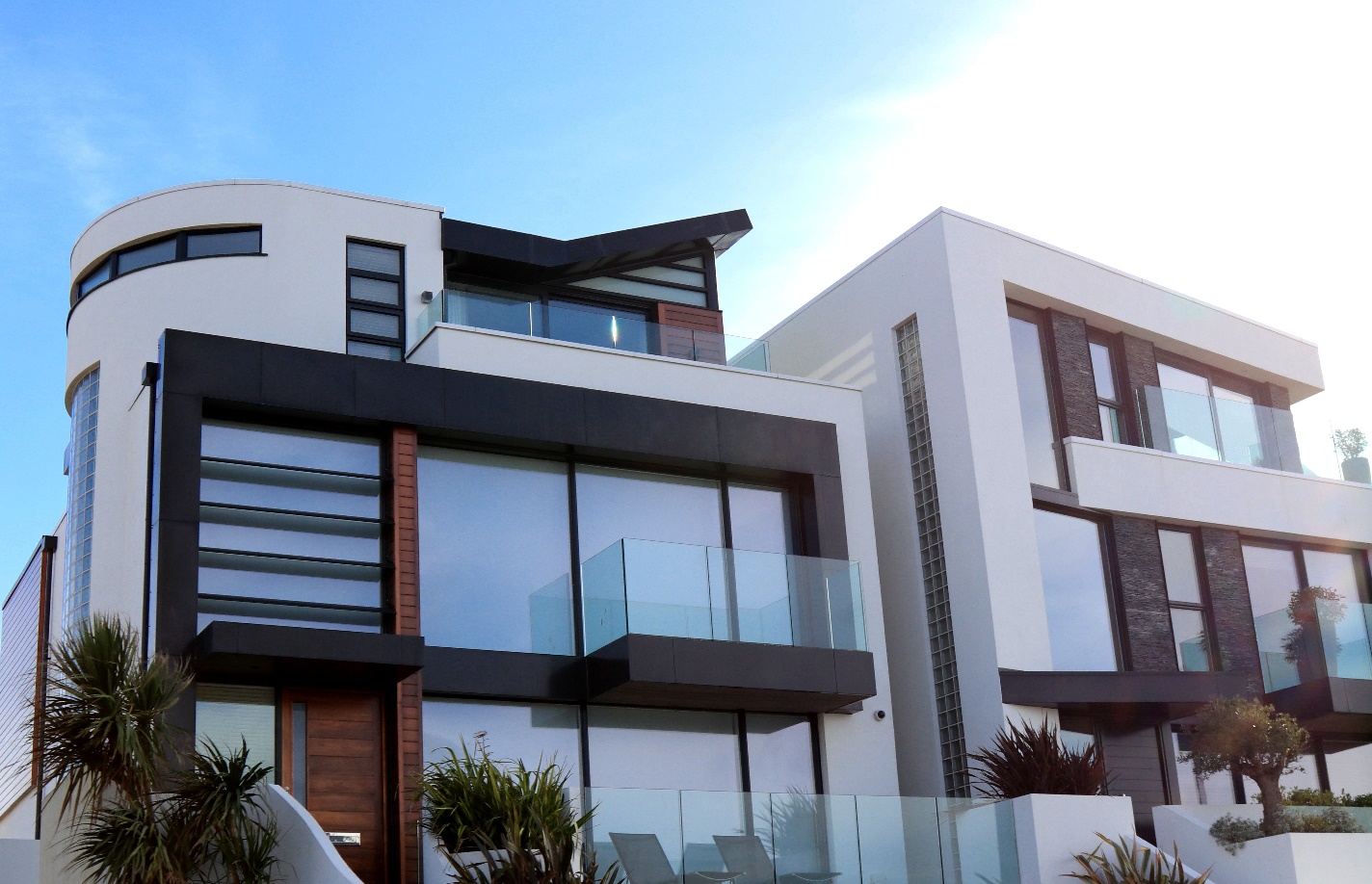The world of architecture is always on the move, constantly influenced by new technologies, aesthetic trends, societal shifts, and an ever-growing emphasis on sustainability.
As the new year unfolds, it’s the perfect time to chat about the trends that are shaping the industry’s future. So, grab a cup of your favorite coffee, and let’s dive into the key architectural design trends that are set to define the next year and beyond.
Sustainable Architecture and Eco-Friendly Designs
As we work collectively to find new ways of fixing the climate crisis and reduce our carbon footprint, new, greener ways of living are slowly becoming the norm. So, it should come as no surprise that innovations in sustainable living are making their way to the world of clean architecture styles.
The planet is speaking, and we’re listening. More than ever, sustainable and eco-friendly designs are at the forefront of what it means to be an architect today.
This trend is all about minimizing our negative environmental impact through energy-efficient systems, green roofs, and the innovative use of recycled materials. It’s not just about the buildings themselves but creating spaces that live in harmony with their surroundings.
Imagine buildings that breathe, landscapes that grow with their communities, and materials that give back to the earth. From solar panels that blend seamlessly into roofing to insulation made from recycled denim, the possibilities are as boundless as our creativity.
Integration of Technology and Smart Buildings
It’s the rise of the machines! While not quite like in the movies, technology is definitely becoming a cornerstone of modern architecture.
Smart buildings, equipped with IoT devices, automate climate control, optimize lighting, and enhance security, all while reducing energy consumption. It’s like giving your building a brain, one that’s eco-conscious and efficiency-driven.
Architects now have the exciting challenge of embedding technology into their designs from the get-go. This means thinking about how a structure interacts with its inhabitants on a day-to-day basis and how technology can enhance this relationship.
It’s a trend that’s pushing the boundaries of traditional architecture and leading us into a future where buildings are not only functional structures but intelligent entities.
Modular and Prefabricated Construction
Modular and prefabricated homes are the building blocks of the future. Gone are the days when prefab meant cookie-cutter and bland. Modular and prefabricated construction is all the rage, offering a way to build faster, cheaper, and greener.
This trend is about assembling sections of a building off-site, then transporting them to their final destination for quick assembly. It’s efficient, it’s sustainable, and it’s totally revolutionizing the way we think about constructing spaces.
The modular trend is particularly exciting because it opens up a world of design possibilities. Architects can experiment with different materials, layouts, and finishes, all while keeping costs and environmental impact low.
Plus, it’s a great way to respond quickly to housing demands or emergency shelters, proving that good design can also be humanitarian.
One of the most significant advantages of modular construction is the drastic reduction in construction time. Since modules are constructed off-site simultaneously with site preparation, projects can be completed up to 50% quicker than traditional methods.
This efficiency isn’t just about speed—it translates into cost savings, less environmental disturbance, and a quicker return on investment for developers and clients.
Modular construction also offers architects a canvas for creativity and innovation. With the ability to customize modules to fit various architectural styles and purposes, the design possibilities are virtually limitless. From sleek, modern office buildings to cozy, eco-friendly homes, modular construction can adapt to the aesthetic and functional demands of any project.
If that wasn’t enough, the modular movement is also inherently green. By reducing waste, optimizing materials, and decreasing the energy used during construction, modular methods are a significant step forward in sustainable building practices.
Moreover, the flexibility of modular buildings means they can be easily disassembled, relocated, or repurposed, further reducing their environmental impact over time.
Biophilic Design for Healthier Environments
If you’ve ever felt a sense of peace walking through a forest or a burst of energy entering a room filled with natural light, you’ve experienced the essence of biophilic design—bringing the outdoors indoors.
This trend focuses on integrating natural elements into architectural designs to promote well-being. Think indoor gardens, water features, and ample use of natural materials and light.
Incorporating elements of nature into our buildings isn’t just aesthetically pleasing—it’s scientifically proven to reduce stress, enhance creativity, and improve our overall health.
Architects have the power to create spaces that not only serve a function but also contribute to the well-being of those who inhabit them.
Dynamic and Adaptive Spaces
Our lives are constantly changing, and our spaces need to keep up. Enter dynamic and adaptive spaces—areas designed to serve multiple purposes and adapt to the needs of their users.
This trend is making its way to exterior and interior architecture. Whether it’s movable walls, foldable rooms, or furniture that transforms with the flick of a wrist, this trend is all about flexibility and innovation.
But why does adaptability matter in architecture? In a world where remote work has become the norm and the lines between living, working, and playing continue to blur, adaptable spaces offer a solution that is both practical and sustainable.
They allow us to do more with less, reducing the need for extensive renovations or additional construction as our needs change.
Embracing the Future
It’s clear that the future of architecture is bright, green, and smarter than ever. These trends aren’t just about keeping up with the Joneses—they’re about reimagining the role of spaces in our lives and the impact of our profession on the planet.
So, let’s roll up our sleeves and get to work, creating the kind of future we can all be proud to be a part of.
Remember, innovation in architecture design is not just about following trends but also about pushing boundaries, asking the right questions, and, most importantly, designing with purpose.
Here’s to a 2024 filled with groundbreaking projects, inspired creativity, and, of course, a bit of fun along the way.
If you’re hoping to jump on these trends and create your own personal sanctuary, we recommend checking out our database of architects and contractors near you who are available for consultation and hire.



